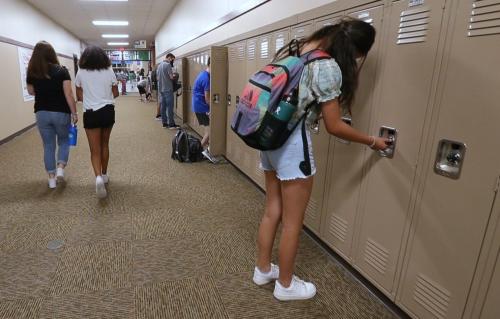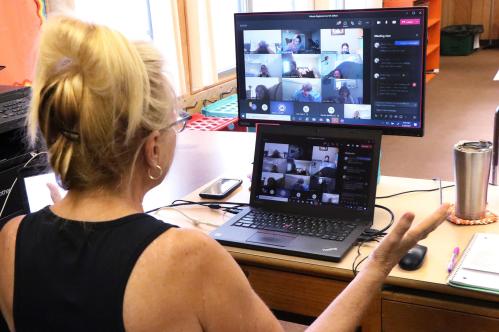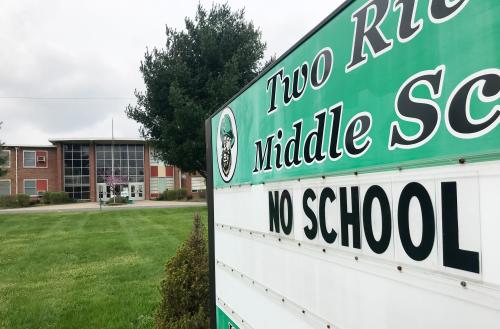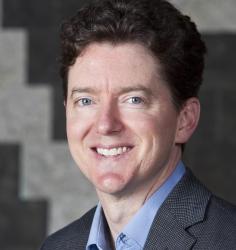Over the past several months, schools and colleges across the country have had to make heart-wrenching decisions about whether and how to reopen. Should they have any in-person activities? If so, when? And at what point—and with what adjustments—is it safe to return to fully in-person activities? If there is a flare-up in COVID-19 cases, should we scale back in-person activities? The debates over these questions have become rancorous. I argue below that this is because the questions themselves are very difficult to answer, and then offer some ideas on how to make the decisions easier and better.
Let me just start by assuming that everyone has the same, seemingly simple, goal: helping people live as long as possible and minimizing pain and suffering from the crisis. Even if we agree that this, or something similar, is the right goal, there are still six reasons why it would be difficult to decide what to do.
- Direct versus indirect effects. I think most of those arguing strenuously for keeping schools closed are focused on the direct effects—your child passes the virus to my child who passes it on to those in risk categories who might die. But how, then, do we explain the leaders from the American Association of Pediatricians arguing for reopening schools? The answer is the indirect effects, especially the negative effects of school closures on academic learning and child mental and physical health—and their long-term consequences. In addition, the economy cannot open until schools (and child-care facilities) reopen; the current state of affairs is reducing income and increasing unemployment, which creates pain and suffering—and yes, loss of life—for many adults. In short, the direct and immediate effects of virus transmission seem to call for keeping schools closed and the indirect and longer-term effects of social distancing seem to call for reopening.
- Clear, immediate, measurable effects versus vague, long-term, hard-to-measure effects. The direct effects also happen to be more obvious, immediate, and measurable than the indirect effects. We can even visualize the direct effects. We can see ourselves walking into a room with others and imagining our breath, and the virus, spreading throughout the room for others to inhale. But it’s hard to visualize how walking into a room with other people reduces mental health—there are too many steps in between producing that effect. For the same general reasons, we can measure the probability that our walking into a room will transmit the virus to someone else, but we can’t estimate the probability that our actions will have adverse mental health consequences. We tend to give too much weight to the things we can see in front of us, even when the real problem is with what lurks around the corner.
- Mental health versus loss of life. The way I’ve worded the goal—“helping people live as long as possible and minimizing pain and suffering”—also treats the two parts equally. But how much should we weigh loss of life versus pain and suffering? Of course, a loss of life is the worst possible outcome, but how much worse—10 times worse? 100 times worse? Do the millions of mostly small mental health effects add up to something equivalent to loss of life?
- Effects on older people and people of color versus other people. The virus affects different people in different ways. In education settings, the faculty and staff tend to be at much greater risk than the students, due to age differences. Among the adults, COVID-19 risk is also correlated with race, ethnicity, gender, and income in ways that give everyone pause. Opening schools and colleges probably increases one group’s life expectancy at the expense of others.
- The challenge of complete overhauling our work in an interdependent world. We sometimes forget how each thing we do depends on so many others whom we never see. Even if we thought we knew exactly what we should do, whether we can follow through depends on other people. Colleges have to decide while making assumptions about what bars will do. Another good example is coronavirus testing. It’s been clear since the beginning of this crisis that a key to minimizing the harm is a massive public COVID-19 testing regime. With that, we could identify people who are sick, isolate them, and care for them, helping protect everyone else in the process. These data could also be used to quickly understand transmission patterns and learn about what is safe and what is not. The problem is that the testing regime never materialized. More schools and colleges might have been able to open safely if such a testing regime were in place.
- Stress. The crisis itself has created stress and anxiety that make it hard to grapple with the above dilemmas. It’s a widely accepted fact of human behavior that we make poor decisions under stress. We tend to become more less rational and more selfish—at precisely the time we need people to be judicious and selfless.
It’s no wonder the reopening discussion has been so challenging and bitter. We have to decide whether to open schools and colleges while weighing the direct versus indirect effects, clear versus ambiguous effects, and mortality versus suffering effects—and how all of these affect different groups in different ways—and do all of this while predicting what other people whom we depend on are going to do. And we have to make all of these difficult decisions under intense pressure and stress.
So, what can we do?
First, education leaders need to accept that there is no 100% safe option. This is a public health crisis, which means people will suffer either way. Reopening will have negative side effects, and so will reopening fully in-person. Leaders have to make the difficult choice about how to minimize that harm.
Second, if we find ourselves talking about anything other than loss of life, pain, and suffering we might cause to others—others inside and outside our organizations—then we’re probably on the wrong track. The possibility that your organization will collapse is a legitimate concern, because of the pain and suffering that could cause, not just for your employees but those who depend on them. The key challenge is ensuring that this type of reasoning doesn’t degenerate into an excuse to act in our private interests and against the public interest.
Third, think creatively about new and different ways to reopen and stay open, in-person. In some sense, this in-person versus remote decision framing isn’t even the right way to think about the problem. The question really is, how can I fulfill my organization’s mission in the best way possible under these difficult circumstances? If you think that you can’t get back to your mission until after you go back in-person, then you are almost certainly making a big mistake.
Fourth, give people in your organizations as many choices as possible. We all find ourselves in different situations—different risk categories, different caregiving responsibilities. Many schools and colleges are giving families choices about whether their children return, and giving teachers and staff similar choices. This is the right thing to do when possible. When it’s not possible—giving choice comes at a cost—explain why.
Finally, remember that we’re all in this together. This isn’t just a platitude. Even those who are not in a “risk category” might still be at risk as individuals, and almost everyone knows someone who has suffered from COVID-19. This fact alone should bring us together and help us empathize and think beyond ourselves.
Education leaders always bear a heavy responsibility even in the best of times, for all that schools and colleges do for society. The weight of that responsibility may never again be heavier than it is right now. By understanding the complexity of these decisions, I hope we can move forward more productively and avoid the mistakes of recent months.







Commentary
When should schools reopen fully in-person?
Challenges and suggestions for school leaders
September 29, 2020